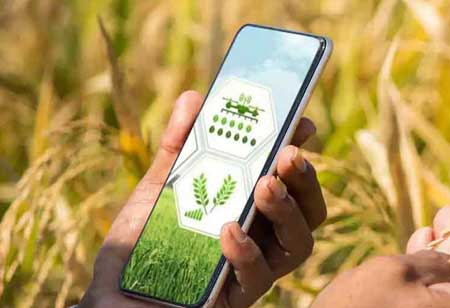Thank you for Subscribing to Agri Business Review Weekly Brief
A Greener Alternative to Traditional Farming
Recently a hyper-controlled indoor farm was built where robots carefully transfer seedlings with barcoded traits into different foot towers that are then hung vertically inside a growing room.

By
Agri Business Review | Thursday, December 01, 2022
Stay ahead of the industry with exclusive feature stories on the top companies, expert insights and the latest news delivered straight to your inbox. Subscribe today.
The agricultural landscape is reimagining farming, reinventing the fresh food supply chain, and rebuilding one that is simpler, safer, has more surety of supply, and eventually aims towards sustainability.
FREMONT, CA:Recently a hyper-controlled indoor farm was built where robots carefully transfer seedlings with barcoded traits into different foot towers that are then hung vertically inside a growing room. Inside the hygienic space operated by the indoor farming company, there is no soil, sunlight, or tractors, but rows of hanging crops illuminated by LED lights and carefully monitored by cameras, sensors, and artificial intelligence. Once a tower is ready for harvesting, a balletic automated process reminiscent of a dry cleaner’s conveyor belt begins.
Robots grab and turn the tower on its side before setting it down to be trimmed by a machine. Workers inspect the greens for defects, and later pesticide-free products are packaged and put on a truck to be delivered to a local market, where the customer becomes the first person to touch it.
Indoor farming will revolutionise the future of agriculture in a warming world, or it will be a problematic climate solution due to its high energy costs. Today, climate change is transforming what is grown and how it is grown. With the world's population rapidly increasing, experts believe global food production must increase by 70% from current levels. However, it is clear today's food systems are not prepared with agricultural land in short supply and with climate crisis and urbanisation.
There will be a radical increase in vertical farms in the coming years. However, the massive energy costs needed to run vertical farms and greenhouses make the practice less eco-friendly than their branding, raising concerns about how they can feed a world relying on calories from grains. Designed to produce larger yields than traditional outdoor farming, vertical farms occupy spaces such as buildings or shipping containers while using less water as they can recapture and recycle water rather than waste due to poor irrigation or evaporation. Products are fully traceable from seed to shelf, stay fresher longer, and have less risk of bacteria.
Large-scale vertical farms are built near cities where greens can be bred for flavour rather than storage. With futuristic farming, there is less need for products to sit inside a truck for days, losing their quality and nutritional value. To find certainty and reliability, smart farms collect real-time data points via sensors and cameras, feeding into machine-learning algorithms to offer their products to many grocery stores. In the process of trying to find solutions to vulnerabilities in the food system, entrepreneurs gather knowledge about plant growth and agronomy that would take a traditional farmer hundreds of years to accumulate.
The agricultural industry is reimagining farming, reinventing the fresh food supply chain, and rebuilding one that is simpler, safer, has more certainty of supply, and ultimately is more sustainable as well.





